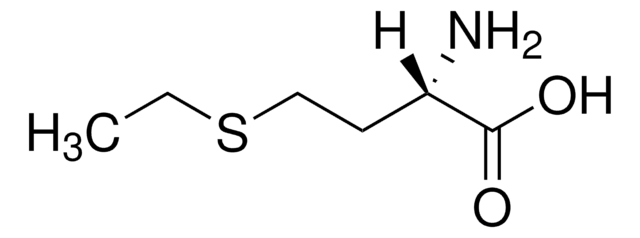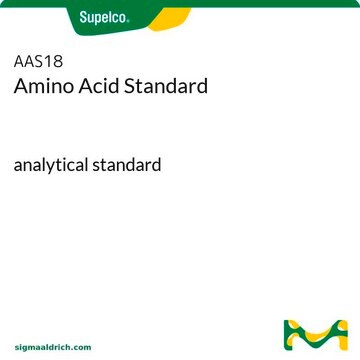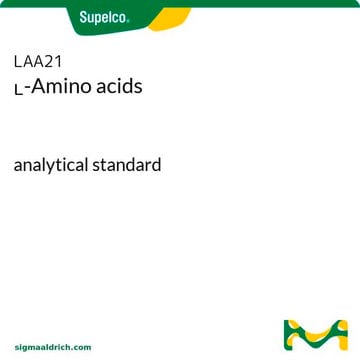E5139
DL-Ethionine
≥95% (TLC)
Sinónimos:
DL-2-Amino-4-(ethylthio)butyric acid
About This Item
Productos recomendados
Nombre del producto
DL-Ethionine, ≥95% (TLC)
Ensayo
≥95% (TLC)
Formulario
powder
color
white to off-white
mp
269 °C
aplicaciones
cell analysis
temp. de almacenamiento
−20°C
cadena SMILES
CCSCCC(N)C(O)=O
InChI
1S/C6H13NO2S/c1-2-10-4-3-5(7)6(8)9/h5H,2-4,7H2,1H3,(H,8,9)
Clave InChI
GGLZPLKKBSSKCX-UHFFFAOYSA-N
¿Está buscando productos similares? Visita Guía de comparación de productos
Aplicación
- Superoxide dismutase activity as a measure of hepatic oxidative stress in cattle following ethionine administration.: This study evaluates the hepatic oxidative stress in cattle induced by ethionine administration by measuring superoxide dismutase activity. The findings suggest a significant oxidative response, highlighting the role of DL-Ethionine in studying liver oxidative mechanisms (Abd Ellah et al., 2009).
Acciones bioquímicas o fisiológicas
Palabra de señalización
Warning
Frases de peligro
Consejos de prudencia
Clasificaciones de peligro
Eye Irrit. 2 - Skin Irrit. 2 - STOT SE 3
Órganos de actuación
Respiratory system
Código de clase de almacenamiento
11 - Combustible Solids
Clase de riesgo para el agua (WGK)
WGK 3
Equipo de protección personal
dust mask type N95 (US), Eyeshields, Gloves
Elija entre una de las versiones más recientes:
Certificados de análisis (COA)
¿No ve la versión correcta?
Si necesita una versión concreta, puede buscar un certificado específico por el número de lote.
¿Ya tiene este producto?
Encuentre la documentación para los productos que ha comprado recientemente en la Biblioteca de documentos.
Active Filters
Nuestro equipo de científicos tiene experiencia en todas las áreas de investigación: Ciencias de la vida, Ciencia de los materiales, Síntesis química, Cromatografía, Analítica y muchas otras.
Póngase en contacto con el Servicio técnico








